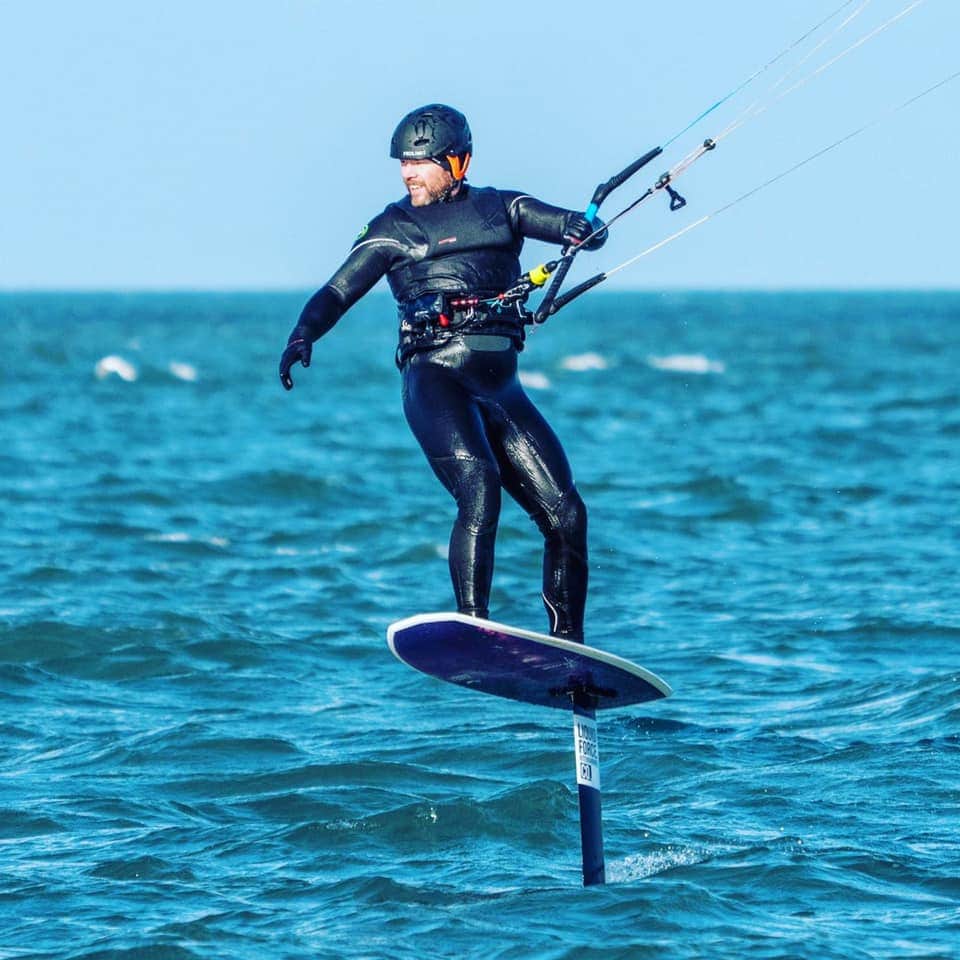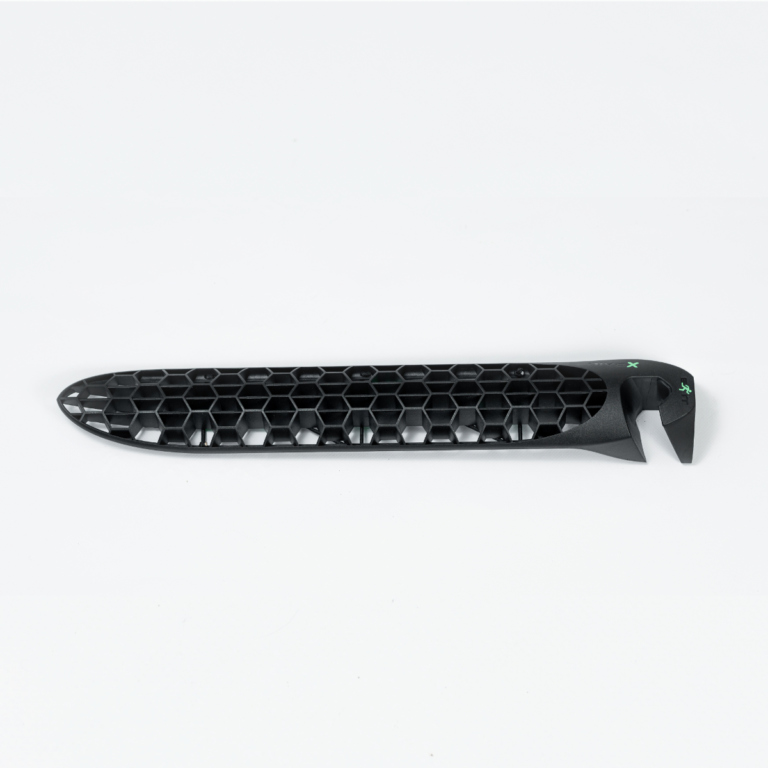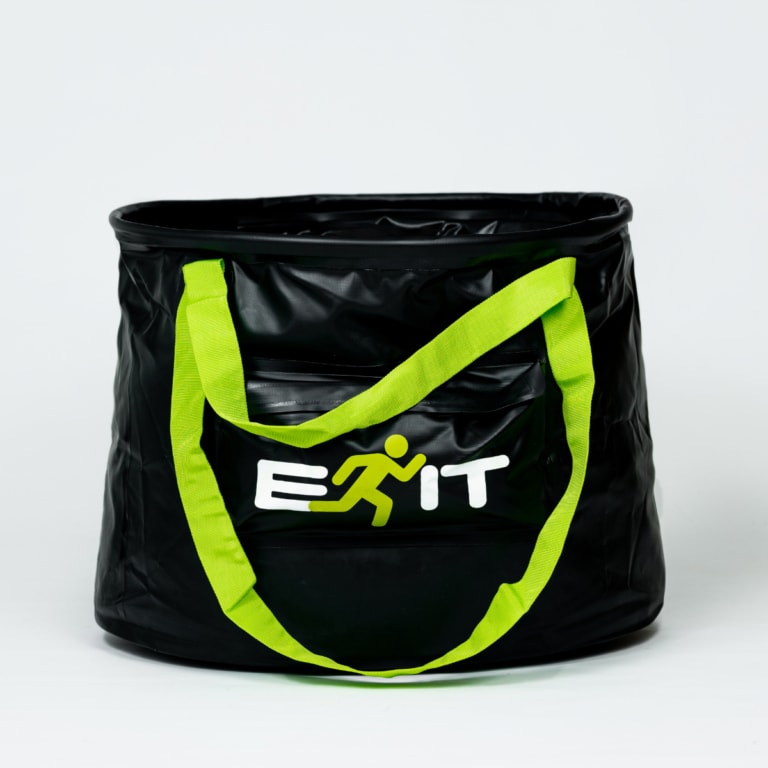Kitesurfing is a focus watersport for us here at Exit. Brand head Kieran cites kitesurfing as his go-to discipline. Even though he indulges in a variety of other watery activities as well. Kiting isn’t exactly a new thing. But there’s still plenty of reason to get involved. With that in mind, here’s our loose guide to kiteboarding in 2024.
-
XRail Wetsuit Hanger
€39.90 inc. VAT -
BUX Wetsuit Change Bucket
€49.90 inc. VAT
Table of Contents
A note on kitesurfing essential accessories from Exit.
If you’re kiteboarding – or thinking about it – you’ll most likely be wearing a wetsuit. For anyone continuing their kiting journey through the off-season wetsuit boots, gloves and a hood may also be required. It’s no secret the Northern Hemisphere is on the cooler side. So adequate protection in the ocean is a must.

Exit manufactures and supplies sustainable, technical watersports accessories for all watersports. The XRail is an innovative wetsuit hanger that also helps prolong the life of your wetsuit. Meanwhile, the BUX wetsuit change bucket can be stood in when removing your wetsuit gear and then used to transport wet kit home. The SUX suction up rail allows the XRail to be hung in even more places. The FYX kit will help you repair damaged neoprene. All in, as kitesurfers, the Exit system is one not to be without. Check out the online shop here for the full product list.
A bit of kiteboarding history.
Kitesurfing – also known as kiteboarding – has been around since the 1970s in some way shape and form. Following windsurfing’s early successes tinkerers and mad scientists were keen to test what other form of wind-powered craft could be harnessed. Kites were the logical next focus point.
Gijsbertus Adrianus Panhuise, from the Netherlands, first patented kiteboarding during the 1970s. His patent covers a floating board ‘where a pilot standing up on it is pulled by a wind-catching device of a parachute type tied to his harness on a trapeze-type belt.’ Unfortunately, this didn’t fly (pun intended!) and never caught on.
The 1980s and 90s.
During the 80s slightly more successful attempts to use kiting technology emerged. Germany’s Dieter Strasilla developed kite skiing. Strasilla and a Swiss friend Andrea Kuhn then got their heads together and used a kite in tandem with surfboards, grass skies and self-made buggies.
Bruno Legaignoux and Dominique Legaignoux patented an inflatable kite for kitesurfing in 1984 off the coast of France. Followed by Bill Roeseler and son Cory Roeseler patented another design in 1994. This had water launching capabilities and could fly upwind. Hawaiian waterman legend Laird Hamilton and Manu Bertin popularised kiting on Maui. Whilst in Florida Raphaël Baruch changed the sport’s name and started promoting kitesurfing. In 1999 kitesurfing became mainstream following more breakthrough equipment designs with the likes of Robby Naish getting involved via his own Naish brand.
Where’s kitesurfing at now?
Kiting has come a long way. The equipment has evolved considerably and is now considered much safer than before. Especially the kite itself. Complete depower, whilst in flight, and easy launch and recovery attributes are some of the biggest gains.
Kitesurfing has many different areas to gravitate towards, depending on your tastes and style. Having learnt the basics you’re free to explore, freeriding, freestyle, strapless freestyle, wave riding, big air, wake style kiting, kite foiling, slalom kiting, speed kiting, formula kite racing, kiteboarding on land and kite buggying.
What’s the mass appeal part of kiting?
Freeride kitesurfing is the most popular area of the sport. This can be on flat water or lumpy sea states. Riders will mostly chew up the miles back and forth. There could be elements of jumping and wave riding within this. And perhaps some form of freestyle.

For those who want to focus on one aspect specialist equipment is usually preferred. For instance, with wave riding kiters tend to use reinforced kite-specific surfboards. Kites are also optimised for surf environments. Kite foiling – another example – utilises hydrofoil technology and the lower-end wind strengths to fly above the water using a kite.
One reason to kitesurf.
Perhaps one of the biggest areas of the appeal surrounding kiteboarding is the ability to milk conditions on the lower end of the spectrum. Pre-wing foiling (which also does this) kiting was a way to maximise your days on the water whatever Mother Nature bowled your way. Far too often wind heads are faced with lacklustre conditions. And kites are a way to get over this hurdle and still enjoy some fun on the brine.

With a kite in hand even light winds are ripe for some big air boosts, spray-chucking slashes and wave shredding. And all whilst riding a low-volume, lightweight board. Comparing this end of the sport to light wind windsurfing – which requires big voluminous boards and sails for light winds – you can see why riders migrate or start kitesurfing. The other benefit is how compact the equipment for transport and storage.
Kitesurfing safety.
If you’re reading this thinking you fancy a bash at kitesurfing then we’d urge you to seek professional tuition. Going it alone is certainly possible. But it’s far safer to get some kitesurfing lessons from a qualified instructor or certified kite school.
One good way to do this is to combine the start of your kitesurf journey with an overseas holiday. This’ll make the learning process more fun if you’re somewhere warm and breezy. And in many recognised overseas kitesurfing locations the wind can be more consistent than at home. Think somewhere like the Canary Islands where they get regular Trade Winds.
Kitesurfing hotspots.
If you’re seriously considering kitesurfing then there are some well frequented locations in and around the UK and Ireland where you’ll find plenty of riders. Here are a few spots to research. (There are plenty more).
- Dollymount Strand – Dublin
- Carlingford Lough – Warrenpoint
- Tiree – Scotland
- Southport Beach – Merseyside
- Scarborough – North Yorkshire
- Hayling Island – Hampshire
- Poole Harbour – Dorset
- Daymer Bay – Cornwall
- Rhosneigr – North Wales
Summing up the kitesurfing experience.
Once you’ve learnt the basics kitesurfing can open up a whole world of fun. Never again will breezy days be the same. If you’re thinking about starting to kite we’d urge you to take that plunge. You’ll be thankful you did.



